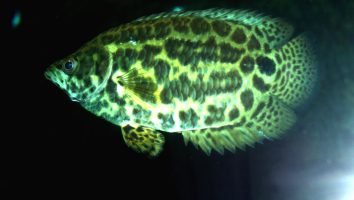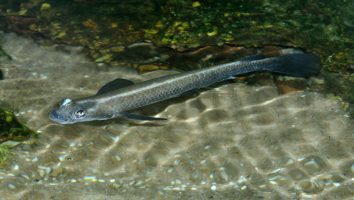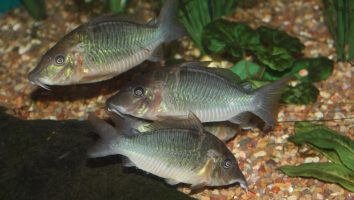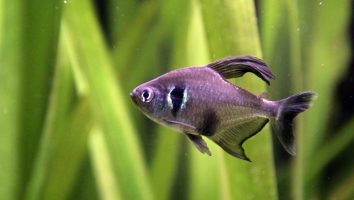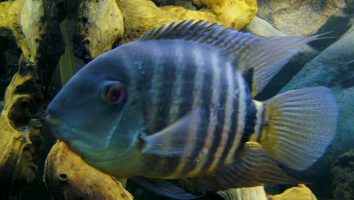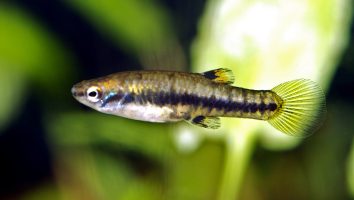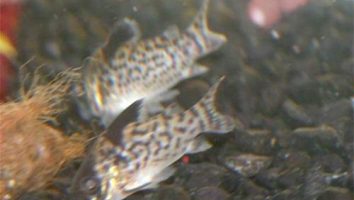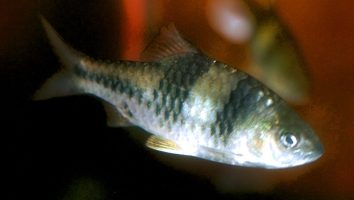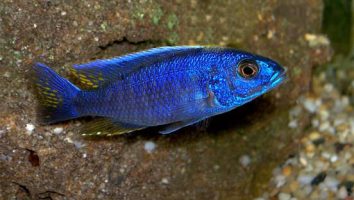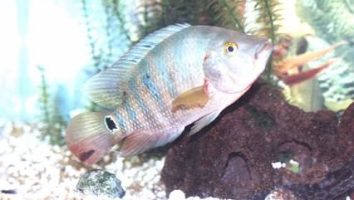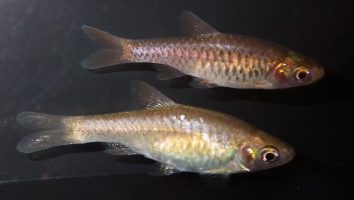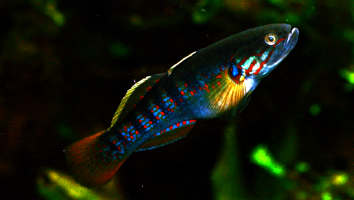The blue acara is a beautiful freshwater fish that is perfect for beginner aquarium hobbyists. They are easy to care for, and their peaceful nature makes them a great addition to any community tank.
Despite their ease of care, there are still a few things you need to know about blue acara care. In this guide, we will go over everything you need to know about keeping blue acaras in your aquarium.
Table of contents
Species overview
Blue acaras (scientific name: Aequidens pulcher) are a type of freshwater cichlid that’s native to South America. They’re most commonly found in the countries of Guyana, Suriname, and French Guiana.
Blue acaras prefer slow-moving waters with a lot of vegetation. This could be anything from ponds and lakes to swamps and marshes. As long as the water is fairly stagnant and there’s plenty of plant life, blue acaras will be happy.
These fish are relatively peaceful compared to other cichlids and can get along with a wide variety of tank mates. They are, however, known to be a bit aggressive toward their own species. So it’s important to have a good ratio of males to females (usually about 2:1) if you want to avoid any fighting.
The blue acara is a very popular freshwater fish due to its bright blue coloration. It’s a striking addition to any aquarium and is sure to be a conversation starter.
Appearance
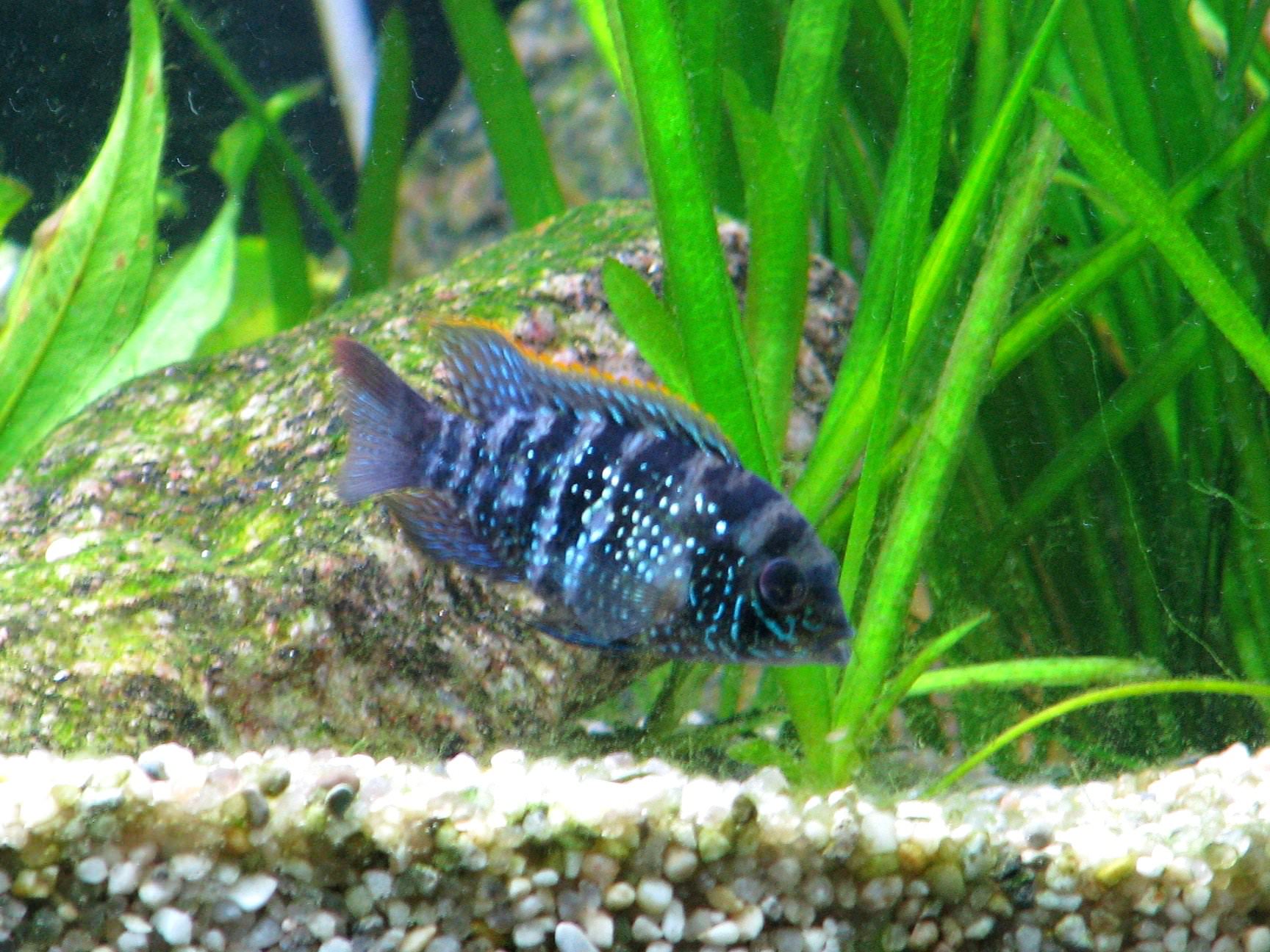
The Blue Acara is a beautiful freshwater fish that has a blue coloration that can vary in intensity. The blue coloration is usually darkest on their dorsal half and gets lighter towards their belly.
The fins on the Blue Acara are all fairly standard in terms of size and shape. They have a dorsal fin that starts about two-thirds of the way back on their bodies. This fin is tall and somewhat triangular in shape.
The anal fin is a bit shorter than the dorsal fin and shares a similar shape. Both of these fins have a dark blue edging that really makes them stand out.
The pectoral and ventral fins are both short and slightly rounded. The caudal fin is forked and also has a dark blue edging.
One thing that really sets the Blue Acara apart from other fish is the coloration of their eyes. The iris is a bright blue color that really stands out against the dark coloration of their bodies.
Lifespan
The average lifespan of a blue acara is 10 to 15 years. That’s a pretty long time for a fish, and it’s a testament to their hardiness.
As with any other fish, there are a number of factors that can impact the lifespan of a blue acara. Things like water quality, diet, and stress levels can all shorten their life expectancy.
Size
The average blue acara size is between 4 and 6 inches, with males being on the larger end of that spectrum. These fish can live for up to 10 years with the right care.
Tank
Tank Size
The recommended tank size for blue acaras is at least 50 gallons. If you’re looking for a smaller cichlid that can do well in a smaller tank, this is a good option.
While 50 gallons is the minimum, we recommend going up to at least a 75-gallon tank if you can. This will give them plenty of room to move around and grow.
Water Parameters
The blue acara is a freshwater fish that is native to South America. In the wild, they can be found in slow-moving rivers and streams with a sandy bottom.
They are relatively easy to care for in the home aquarium as long as their water parameters are kept within a certain range.
- Water Temperature: 72-82 degrees Fahrenheit
- pH Levels: 6.5-7.5
- Water Hardness: 5-15 dGH
- Alkalinity Levels: 4-8 dKH
What To Put In Their Tank
Blue acaras are a species of cichlid that come from South America. In the wild, they can be found in slow-moving rivers and streams.
When it comes to setting up an aquarium that’s suitable for them, there are a few key things that you’ll need to take into account.
The first is the size of the tank. These fish can grow to be around 6-8 inches in length, which means you’ll need a tank that’s at least 50 gallons. If you plan on keeping more than one then you should increase the size accordingly.
The second thing you need to think about is the substrate. These fish like to dig and root around a bit, so you’ll need something that’s soft and won’t hurt their delicate fins.
We recommend using a sandy substrate in their tank. This will make them feel more at home and could even help with their coloration (a darker substrate will make them look more blue).
Other than that, you can pretty much use any standard freshwater aquarium decorations. These fish don’t have any specific needs when it comes to plants or rocks.
Just make sure there’s plenty of open swimming space available!
Common Diseases
The blue acara is a fairly hearty fish, but that doesn’t mean they can’t fall ill from time to time. The most common disease that affects this species is ich.
This is a parasitic infection that will present itself as white spots on the body, fins, and gills of your fish. If left untreated, it can be fatal.
Luckily, ich is relatively easy to treat. There are a number of products on the market that will kill the parasite while causing minimal harm to your fish.
The best way to prevent ich (and other diseases) is by maintaining a clean and stable tank. This will create an environment that is less hospitable to parasites and other illnesses.
You should also be sure to quarantine new fish before adding them to your tank. This will allow you to treat them for any diseases they may be carrying before they have a chance to infect your other fish.
Behavior & Temperament
The blue acara is a beautiful freshwater fish that is native to South America. It is a popular choice for many aquarists because of its vibrant blue coloration.
This fish is relatively peaceful, but it can be territorial with other fish that have similar coloration. It is also known to be a bit nippy, so it is not recommended for tanks with delicate fish.
The blue acara is an active fish that loves to swim. It is constantly on the move and exploring its surroundings. This fish is also a great jumper, so make sure your tank has a tight-fitting lid.
The blue acara is a omnivore and will eat just about anything. It is especially fond of live foods, such as brine shrimp and bloodworms.
Tank Mates
Blue acaras are a bit more particular when it comes to finding the right tank mates.
First, these fish come from Central and South America. As a result, they prefer warm water. They’re also used to living in slow-moving rivers and streams.
This means that you’ll need to find fish that can handle similar water conditions. Additionally, you’ll want to avoid any fish that are too nippy or aggressive.
Here are some compatible blue acara tank mates to get you started:
- Convict Cichlid
- Firemouth Cichlid
- Jack Dempsey
- Oscar
- Green Terror
- Blood Parrot
- Red Tail Shark
- Silver Dollar
- Plecostomus
- Bristlenose Pleco
Breeding
Blue acaras are one of the easier fish to breed in captivity. In the wild, they typically spawn during the rainy season. But in captivity, you can trigger spawning at any time of year.
The first step is to set up a breeding tank. It should be at least 20 gallons in size and hold two to three gallons of water per inch of fish. Then, add plenty of live plants and hiding places.
Blue acaras like to spawn in areas with dense vegetation. That’s why live plants are so important.
Next, adjust the water parameters. The water should be soft and slightly acidic, with a pH of 6.5 to 7.0. The temperature should be around 78 degrees Fahrenheit.
When everything is ready, add two females for every male. Then, feed the fish live foods and wait for them to spawn.
The female will lay her eggs on the plants. After she does that, the male will fertilize them. He will also guard the eggs until they hatch.
Eggs usually hatch in seven to ten days. When they do, remove the adults and begin feeding the fry live foods.
Conclusion
The Blue Acara is a great fish for a beginner aquarist. They’re relatively easy to care for and don’t require a lot of special attention.
As long as you provide them with a good diet and a clean tank, they’ll be happy and healthy.
We think they make a great addition to any community tank and they’re sure to add some color and life to your aquarium.

